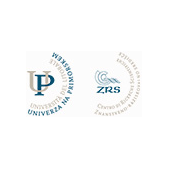The purpose of this blog post is to address the challenge how sports can be engaged as an important channel to reach citizens and to inform them about society’s challenges related to environment and resource efficiency. Additionally, by providing information and setting an example by decreasing the environmental impacts of the governance of sports, citizens can be persuaded to change their attitude and behavior.
In 1999 the Olympic movement adopted “Agenda 21: Sport for sustainable development”. It lays down a roadmap for sustainable development within the sporting world. Even earlier, when the Olympic Charter was adopted, chapter 1, rule 2, para. 13, states that the International Olympic Committee’s (IOC) role is “to encourage and support a responsible concern for environmental issues, to promote sustainable development in sport and to require that the Olympic Games are held accordingly.” Furthermore, chapter 1, rule 2, para. 13 states that IOC is responsible “to promote a positive legacy from the Olympic Games to the host cities and host countries.”
One of the key recommendations coming out of the 7th World Conference on Sport and the Environment (25-27 October 2008, Beijing) is “to encourage all Olympic Games applicant and bid cities to demonstrate the ability to hold a carbon neutral Olympic Games, and host cities to implement policies and actions which achieve this objective.”
It goes without saying that the commitment to deliver sustainability goes far beyond the Olympic Games and encompasses supporters, athletes and venues.
Fans of teams are spread everywhere around the world - millions or billions of people. For example, “70% of the adult population in the US, 168 million fans, claims to follow sports.” [1] Now imagine how the favorite team could be their thirst for a better change. In this way sports can be a medium to inform citizens about society’s grand challenges like environmental degradations and climate change. Let’s say people’s favorite sports player is wearing a t-shirt with some kind of logo encouraging nature conservation or a message related to waste management, etc. The social networks can add up to this, as millions of people every day follow their favorite sport by, for example, entering their Facebook account. “Worldwide, there are 1.86 billion monthly active Facebook users, 1.15 billion are mobile daily active users”. [2]
Waste of consumables, food, water, hard degradable materials address our attention and cannot be left aside. For example, let’s imagine the preparation of a sport event. There are transportation costs and emissions from travelling with airplanes, cars and etc. Then we have the accommodation in hotels, which includes costs for food and for sure wastes. In 2014 FIFA World Cup Brazil generated just over 2.7 million tons of carbon emissions. “Waste Management (WM) estimates that in the USA, the NFL, MLB, NBA, NHL generate approximately 35,000 metric tons of carbon dioxide (CO2) each year from their fans’ waste generation.” One of the solutions to this issue could be the use of eco plastic cups, eco plates, cutlery and offering drinks in eco bottles. [3]
From another perspective, sports events require infrastructure such as stadiums, training camps, sport centers, etc. The building and maintenance of venues for specific events requires substantial natural resources. The Olympic Games are a good example. For example, after the Olympic Games in Greece losses are considered huge. Numerous facilities after the Games in 2004 were abandoned or used very rarely. Abandoned, deserted, empty, broken, worn out, defaced and demolished stadiums, swimming pools and sports centers - all of these are reasons for unnecessary use of resources and cause environmental damages. [4] Think about the consequences of these wastelands. It can hardly fit in the concept of sustainability.
Prior to the initiation of such projects, the long term impact on environment, urban life and humans should be thoroughly analyzed.
When it comes to sportswear, a good example is Adidas. “Sports brand Adidas and environmental initiative Parley for the Oceans have released the first batch of running shoes with uppers made using recycled plastic recovered from the sea. The usual synthetic fibers are replaced with yarns made from the recycled Parley Ocean Plastic. The green wave pattern across the uppers is created from recycled gill net, which was dredged from the sea and recycled into the fiber. The rest of the upper is formed using waste plastic collected around the Maldives, where the government is collaborating with Parley to rid the island chain of the issue within five years.” [5] What “Adidas” accomplished is truly amazing and surely this would impact the initiatives of other companies.
„Adidas“ also launched their product “Smart Soccer Ball” in 2014. This can be regarded as sustainable innovation from an economic point of view. The smart soccer ball allows the football players to digitally track their skills. The ball measures speed, spin, trajectory and strike point with a sensor located inside the ball and sends the data with the paired wireless device. [6]. If we connect the soccer balls with devices such as a bracelet or smart watch, the ball saves a player’s data automatically. This innovation can significantly increase the efficiency of the training process and athletic performance.
“Nike” sports brand reduced their water use by 18% per unit in apparel materials and 43% per unit in footwear manufacturing. In the majority of our world we take things for granted, such as water. According to statistics, 780 million people worldwide are having problems with access to water sources. Some experts forecast that this number is going up to 1 billion until 2050. "Nike" really accomplished an objective for sustainable innovation by reducing water use.
This blog post can be regarded as a beacon designed to attract more attention to the importance of sustainable innovation in sports initiatives. And it can be accomplished in a broad spectrum that includes team supporters, infrastructure, events, sportswear. Sports provide plenty of room for innovators to establish priorities and elaborate on responses to issues stemming from the relationship between sport, environment and sustainability in general. And it is in harmony with the mission of CASI to boost innovation as a key driver for the progress of our society.
Sources:
[1] http://sportsvideo.org/main/files/2014/06/2014-Know-the-Fan-Study_US.pdf
[2] https://zephoria.com/top-15-valuable-facebook-statistics/
[3] http://www.sustainableinnovationinsport.org/downloads/SIIS17_Agenda.pdf
[4] http://www.today.com/news/what-happens-olympic-venues-after-torch-goes-out-2D12152101
[5] https://www.dezeen.com/2016/06/08/adidas-trainers-parley-for-the-ocean-plastic-design-recycling/
[6] http://www.adidas.com/us/micoach-smart-soccer-ball/G83963.html
P.S. This blog post is a result of the joint efforts of the BPM team at TechnoLogica. Special thanks to Dimiter Nikolov.
Relevant themes:
Public participation, Sustainable innovation, Raw materials, Environment, Resource efficiency
Relevant tags: Social innovation, Sustainability, Eco-innovation, Sustainable materials management
























